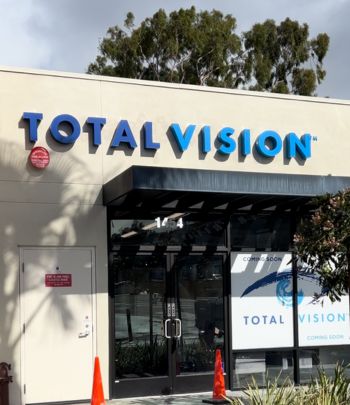Live a Life Free From Glasses & Contacts
If you have a refractive error such as myopia or hyperopia, you’re probably no stranger to the world of glasses and contact lenses. Blurred vision at any distance can be frustrating to deal with; between losing a contact lens down the sink drain or struggling to find your glasses in the morning, you may long for an alternative.
Laser eye surgery, or refractive surgery, is an excellent option for improving your vision and decreasing your reliance on glasses and contacts.
Before the procedure, however, we need to test your vision and check for any other eye problems that could limit your candidacy for refractive surgery. We also have to measure your eye and pupil size to ensure the procedure you’re interested in is right for you.
During a laser eye surgery consultation, we’ll perform a thorough assessment to determine whether laser eye surgery is a viable option. If you’re interested in laser eye surgery, please, book your appointment today!
Types of Laser Eye Surgery
The goal of laser eye surgery is to reduce the power of your refractive error. Laser eye surgery doesn’t guarantee 20/20 vision, and many patients still wear corrective lenses after the surgery.
Depending on your particular eyes, we can recommend a few different types of laser eye surgery.
LASIK
Laser-assisted in situ keratomileusis, or LASIK, is a common refractive procedure used to treat myopia, hyperopia, and astigmatism. The procedure involves using a laser to change your cornea’s shape and how light enters the eye, making your vision clearer.
During the procedure, your ophthalmologist numbs your eyes with special eye drops and places a holder on your eye to keep it from blinking. Then, they’ll use a microkeratome or laser to make a thin flap in your corneal tissue and fold it back. They will then reshape your cornea using a laser and replace the flap over top to act as a natural bandage.
After the procedure, your vision will be blurry, and your eyes may feel gritty. Have a plan to get home and relax after the surgery. Your vision should return to expected clarity within a few days. Around 90% of people who have had LASIK end up with vision between 20/20 and 20/40, without glasses or contact lenses.
PRK
Photorefractive keratectomy, or PRK, is an alternative procedure to LASIK completed in a very similar way. It is also useful for those with myopia, hyperopia, and astigmatism but is more suitable for individuals with thin corneas or dry eyes.
Your eyes will be numbed with numbing eye drops before starting the procedure. Then, your ophthalmologist will remove the outer layer of cells on your cornea, called your epithelium using a special brush, blade, laser, or alcohol solution. Then they will reshape your cornea using a laser. After, they’ll place a bandage contact lens over the top to protect your eye and promote healing.
Your vision will be blurry after the procedure, and you may experience some discomfort. Over-the-counter medication is typically suitable to manage pain, but your surgeon may prescribe medicine. They may monitor you for a few minutes, but you should plan to take the next few days off to heal and relax.
Your vision should clear up within a few weeks, but it may take a month or longer to achieve your best vision. Around 90% of people that have PRK end up with 20/40 vision or better without glasses or contact lenses.


Book Your Appointment Today
If you’re interested in what the world might look like without glasses or contact lenses, laser eye surgery may be an option! Give us a call and book an appointment, and we’ll help you determine the rest.
Come See What We’re About

Visit us
Total Vision Encinitas, formerly known as Pacific View Eyecare Center, is located on the corner of Encinitas Boulevard and El Camino Real.
- Phone: 760.753.6336
- Email: [email protected]
- 1454 Encinitas Boulevard
- Encinitas, CA 92024
Hours of Operation
- Monday: 9:00 AM – 5:00 PM
- Tuesday: 9:00 AM – 5:00 PM
- Wednesday: 9:00 AM – 5:00 PM
- Thursday: 9:00 AM – 5:00 PM
- Friday: 9:00 AM – 2:00 PM
- Saturday: Closed
- Sunday: Closed


Our Brands




Our Google Reviews
Be the First to Know,
Be the First to Win.
From eye health insights to exclusive giveaways, your feed just got a lot clearer.










